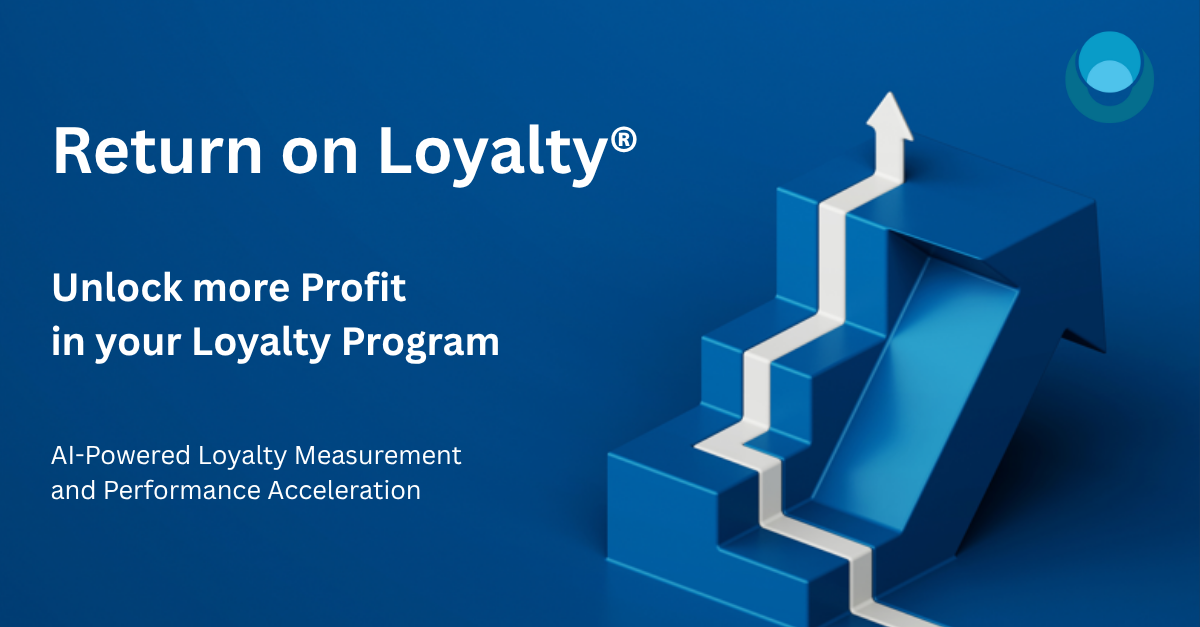
Unlocking the True Value of Loyalty
For years, loyalty programs have promised growth. The successful programs stand out because they are scarce among the tens of thousands of programs operating (looking at you Tesco Clubcard, Frequent Flyer programs and Prime).
However, many still underdeliver, operating on autopilot as their initial passion is diluted by team changes, while CFOs rail against the feel-good metrics and financial reports that do not hold up to scrutiny.
The CFO is correct, robust financial scrutiny of loyalty costs is appropriate. When you cannot reliably measure what your program is delivering and how it is performing right now, you cannot make wise investment decisions. Guesswork is not good enough.
At Ellipsis, we call this the evolution from basic ROI to Return on Loyalty®: a program shift from cost-centre to growth engine. It requires real-time performance intelligence and precise measurement.
Why Basic ROI Falls Short
On average, loyalty programs create value. One global study found they lift sales by 7% in year one and up to 11% by year three1. Why not more sales, for longer?
Because they are measuring the wrong things.
A particularly frustrating example is reporting differences in value, average purchase, tenure, etc., of members compared to non-members and calling it success. High-value customers are more likely to join the program because they intend to spend more than light buyers anyway. Self-selection is just one of the distorting factors that blur the measurement of loyalty returns, but it is so apparent that to ignore it smacks of being wilfully misleading.
Vanity metrics like membership growth or vague engagement stats are often misleading, but they can also actively derail investment. Without proper attribution, programs end up rewarding behaviour that would have happened anyway. Money is wasted. Opportunities are missed.
Stop asking "Did it work?" and start asking "How well is it working now, and what should we do next?"
From Reports to Real-Time Intelligence
Return on Loyalty® is not a dashboard or a quarterly review. It is a strategic management framework built to:
Quantify incremental impact.
Track real-time financial outcomes.
Predict future program performance.
Using our Customer Science® approach, we isolate real engagement signals (not just purchase volume), identify early churn risks, and model growth potential. This means:
You do not confuse wealth with engagement.
You can detect problems before they cost you.
You understand which parts of your program are working.
All backed by balance-sheet-rigorous liability management, to keep the finance team informed.
Planning What Comes Next
Where most programs fail is in not knowing what happens next. Return on Loyalty® enables:
Forward-looking simulations to assess ideas before investing.
Lifetime value predictions to target high-potential customers.
Customer acquisition and retention strategies that balance today's investment with tomorrow’s profit.
It is how our clients optimise their customer portfolios and defend budgets with confidence.
More Than Metrics: Domain Expertise Matters
Loyalty strategy requires specialised analytics and real-world nuance. Our models are trained on over 15 years of live program data across hundreds of implementations. AI enhances the speed, but expertise ensures relevance.
This is especially important as loyalty evolves. Future-ready programs will measure more than spending, including:
Sentiment and advocacy
In-the-moment experience signals
Real-time emotional engagement
Loyalty will become more intelligent, more predictive, and more autonomous. But the foundation is still human insight.
The Strategic Imperative
Loyalty is not broken. But many programs are blind to what is going on.
When you upgrade from basic ROI to Return on Loyalty®, you unlock gains in efficiency, productivity, and profit. You move from retroactive reporting to initiative-taking optimisation. And you turn loyalty into what it was always meant to be: a powerful growth lever.
You do not need to fly blind. The data is there. The framework exists. The question is whether your brand is ready to see it clearly and act on what it finds...
Unlock more Profit in you Loyalty Program with Return on Loyalty®.
Let’s talk. We’re Ellipsis, the Loyalty Experts®.
Reference:
1. “The effects of loyalty program introduction and design on short- and long-term sales and gross profits” by Malika Chaudhuri & Clay M. Voorhees & Jonathan M. Beck Journal of the Academy of Marketing Science Published 22 April 2019.

Download the file
Fill in the form below to gain access and download the file.